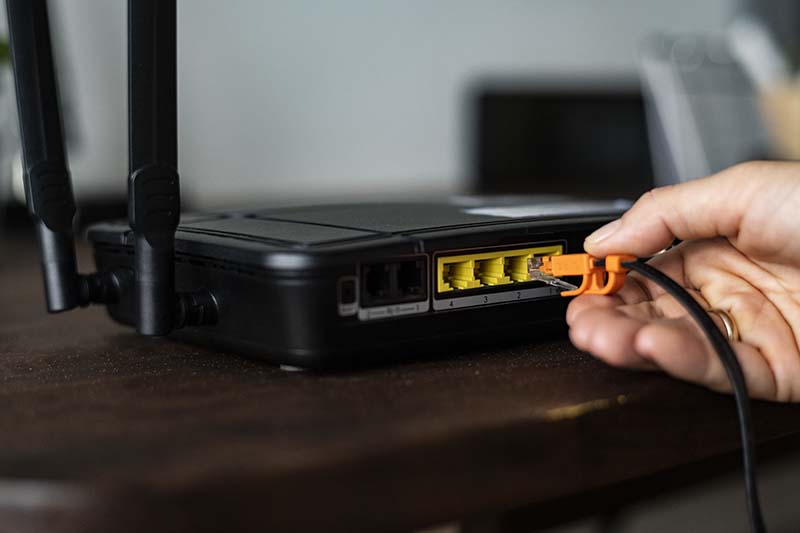What is Failover?
Wired network failures do happen, and they could be a result of a variety of causes, ranging from a construction crew accidentally cutting a communications line, to weather events, to human error in network operations. When these failures occur, enterprises that rely on their internet connections for productivity, business operations, and transactions may lose crucial in-transit data and their business operations could skid into a complete stop. A drop in business and productivity means a rise of negative impact on a company.
If a company’s primary internet connection fails, there is usually a second, standby network connection that can be used as a “Plan B” connection source, and that automatic switch between connections is called failover. When the primary wired connection—Plan A—is disrupted, failover instantly redirects network requests from the primary to the secondary connection, thus maintaining connectivity until the primary connection can be repaired and is back online. Reliable failover is a vital necessity, particularly for businesses that require a secure, “always on” connection for specific applications, for instance credit card processing or automation monitoring and control.
With failover, companies can rest assured knowing if they lose their internet connection, their business activities and procedures will continue performing as they normally would. Failover provides damage control and a comfortable window of time for recovery and repair.

Wired or Wireless Failover?
Failover can come in two forms: wired and wireless. Some companies try to back up their primary wired connection with a second wired line, but there are several disadvantages that come with this. First, unless that secondary wired line of internet connection is installed at the same time as the primary wired line, wired failover solutions can be very expensive. What’s worse, since backup wiring usually follows the same route as primary wiring to customer sites, that Plan B wire is just as vulnerable to the same environmental risks and damage from accidental communication line cuts as your primary wire.
With wireless failover, however, all risks that come with wired failover are eradicated, which is why many companies are turning to LTE failover for backup connectivity. LTE failover is a cellular network provided by a failover router that connects to the primary router (Plan A) and sends continuous probes that constantly test your internet connection. When the failover router detects a link failure from the main router, it will automatically jumpstart and take over the main connection, offering a reliable backup network to keep business moving smoothly.
Benefits of Cellular Backup
Beyond simply being able to switch from a disrupted connection swiftly and seamlessly to an always-on high-speed connection, cellular failover provides three fundamental advantages over wired failover, the first of these being reliability. The world as we know it is changing right before our eyes with the emergence of 5G, and with this new generation of mobile technology comes a wider availability of LTE networks that can be used for cellular failover, thus providing greater reliability and speed for our internet connections. True, location and range of available coverage affects the strength and reliability of internet you’ll receive but given that businesses are generally based in populous areas and available coverage is expanding exponentially thanks to the growth of 5G, odds are your business will have plenty of signal strength to sustain a stable, wireless failover solution.
Low cost is another positive aspect to cellular failover. While cellular services are infamous for their overcharging in the US, it’s important to keep in mind that these costs are in fact minimal when compared to the losses a business can suffer without uninterrupted connectivity. With wireless failover, you’re much less likely to lose data or interrupt critical processes, such as credit card transactions, VoIP (also known as voice over internet protocol, which simply refers to our ability to make voice calls using an internet connection rather than a regular phone line), and CRM traffic (CRM being short for customer relationship management, which is a technology designed to manage a company’s relationships and interactions with customers)—and all of these procedures are considerably less data hungry compared to any browsing your average person would do on their smartphone.
Last but certainly not least, scalability and deployment are a third advantage that comes with cellular failover. If a company is looking to expand swiftly or seeks to deploy a cellular network as a backup to their existing WAN (wide area network) as quickly as possible, it can be as simple as putting a SIM card in a router and shipping it to a separate site. If constructed correctly, the device should come online as soon as it’s plugged in and appear in the cloud management tool (depending on the hardware provider), ready and available for the IT team to configure and test. Also, with a cellular connection, there’s no need to replace existing infrastructure—routers, firewalls, SD-WAN appliances—because with a serial port for out-of-band management, you can simply configure and troubleshoot other devices remotely even when the primary connection fails.
Conclusion
Whether you have a small brick and mortar business or a large, enterprise-level business, you probably rely on internet connection to keep business operations running smoothly, and if that connection fails, those operations are at risk of slamming to a stop. While wired network systems can still support the bulk of network traffic, a wireless failover system is far more reliable and guarantees every one of your business operations can always remain uninterrupted, productive, and profitable, despite any connection crashes that may occur. In fact, many companies are now finding cellular ideal as not only a failover option but a cost-effective primary connection source as well, particularly in remote locations. In other words, cellular failover is an instant game-changer compared to wired failover.


